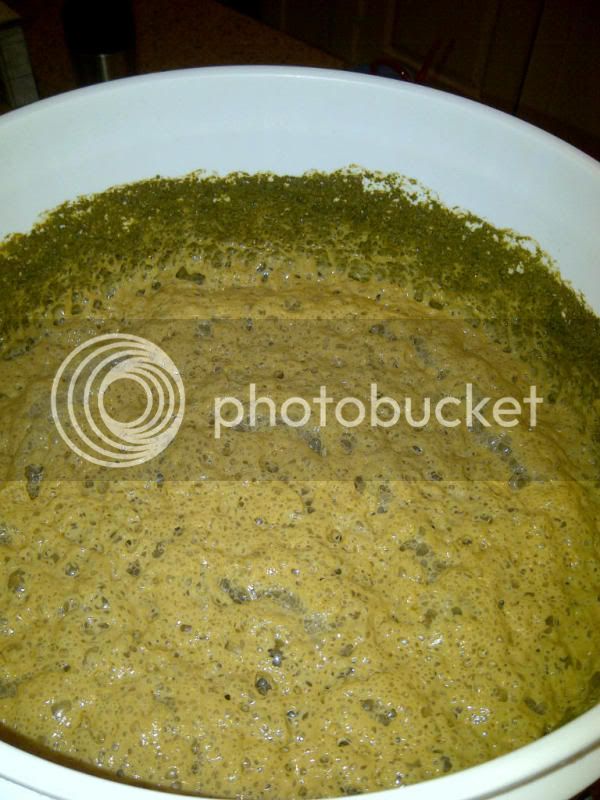puckjer
Well-Known Member
guys, i brewed the recipe below and had an interesting issue last night when i went to rack to the secondary fermenter. when i opened my primary there was this thick Mucus like yeast structure on top of the beer. i have brewed at least 30 batches and have never seen this before. it smelled of yeast and was super thick and sticky. i took my hydrometer and pushed it through to check the gravity and it was at 1.020. this beer has been in the fermenter for 10 days. i had a strong fermentation for the first 5 days and the bubbling in the airlock ceased after 7 days. the picture below shows what i saw. i went ahead and racked the beer to the secondary and will let it sit for at least 2 more weeks before i keg. do you guys have any idea what this sticky yeasty substance was? had it been during active fermentation i would have assumed it was Krueson. weird.

Style: Trappist Style Ale
Sugars:
Amount Type
2 lbs. Wheat Malt Extract
6 lbs. Dark Malt Extract
1 lb Amber Belgian Candi Sugar
Grains:
Amount Type
1 lb. Cara-Vienne Malt
1 lb. Cara-Munich Malt
Hops:
Amount Type
1/2 oz. German Northern Brewers (bittering)
1 oz. Hallertauer Hershbrucker (flavoring)
Yeast: White Labs WLP 530
Yeast nutrient (optional)
Starting Gravity: 1.064
Ending Gravity: 1.014

Style: Trappist Style Ale
Sugars:
Amount Type
2 lbs. Wheat Malt Extract
6 lbs. Dark Malt Extract
1 lb Amber Belgian Candi Sugar
Grains:
Amount Type
1 lb. Cara-Vienne Malt
1 lb. Cara-Munich Malt
Hops:
Amount Type
1/2 oz. German Northern Brewers (bittering)
1 oz. Hallertauer Hershbrucker (flavoring)
Yeast: White Labs WLP 530
Yeast nutrient (optional)
Starting Gravity: 1.064
Ending Gravity: 1.014


